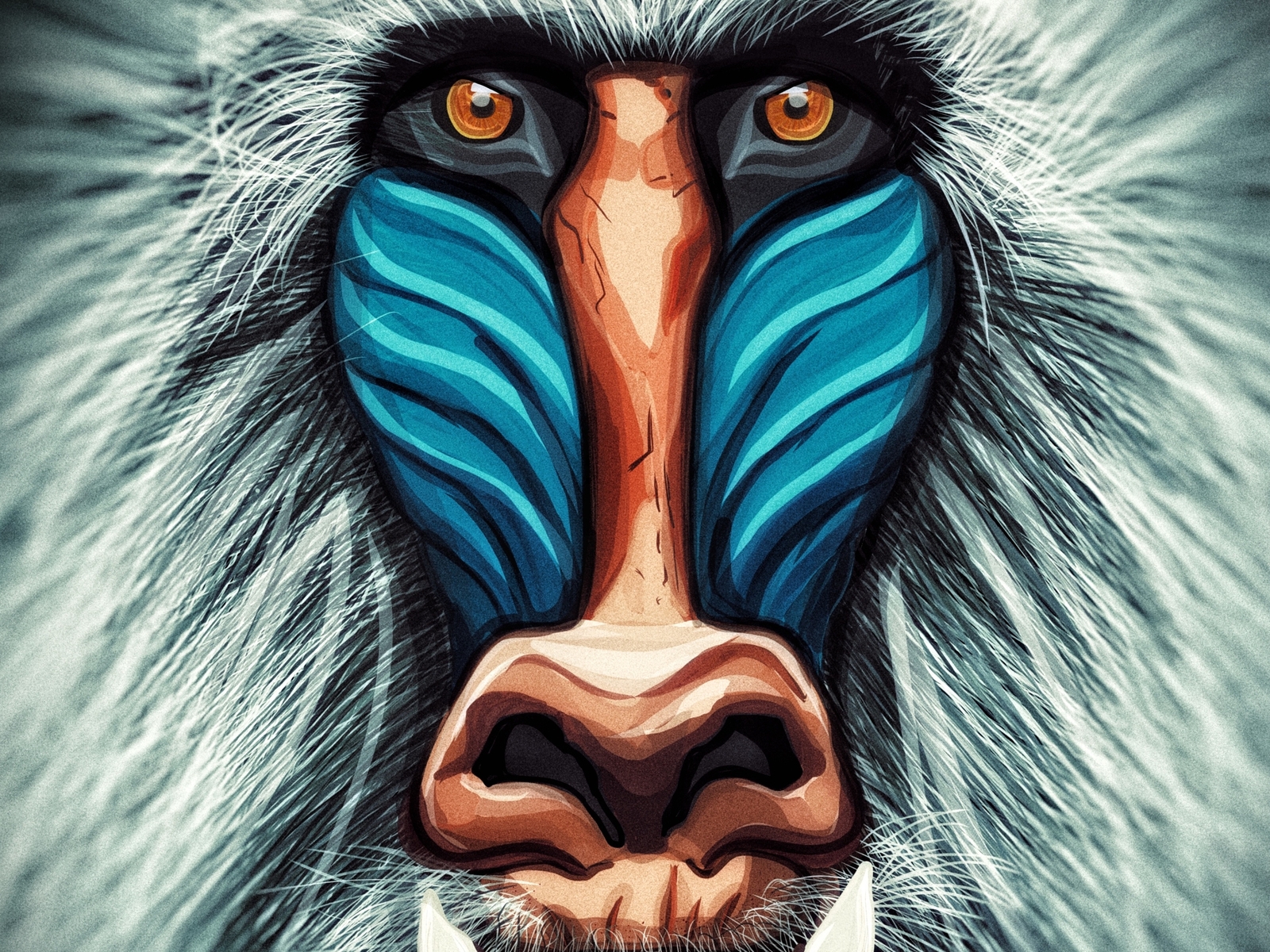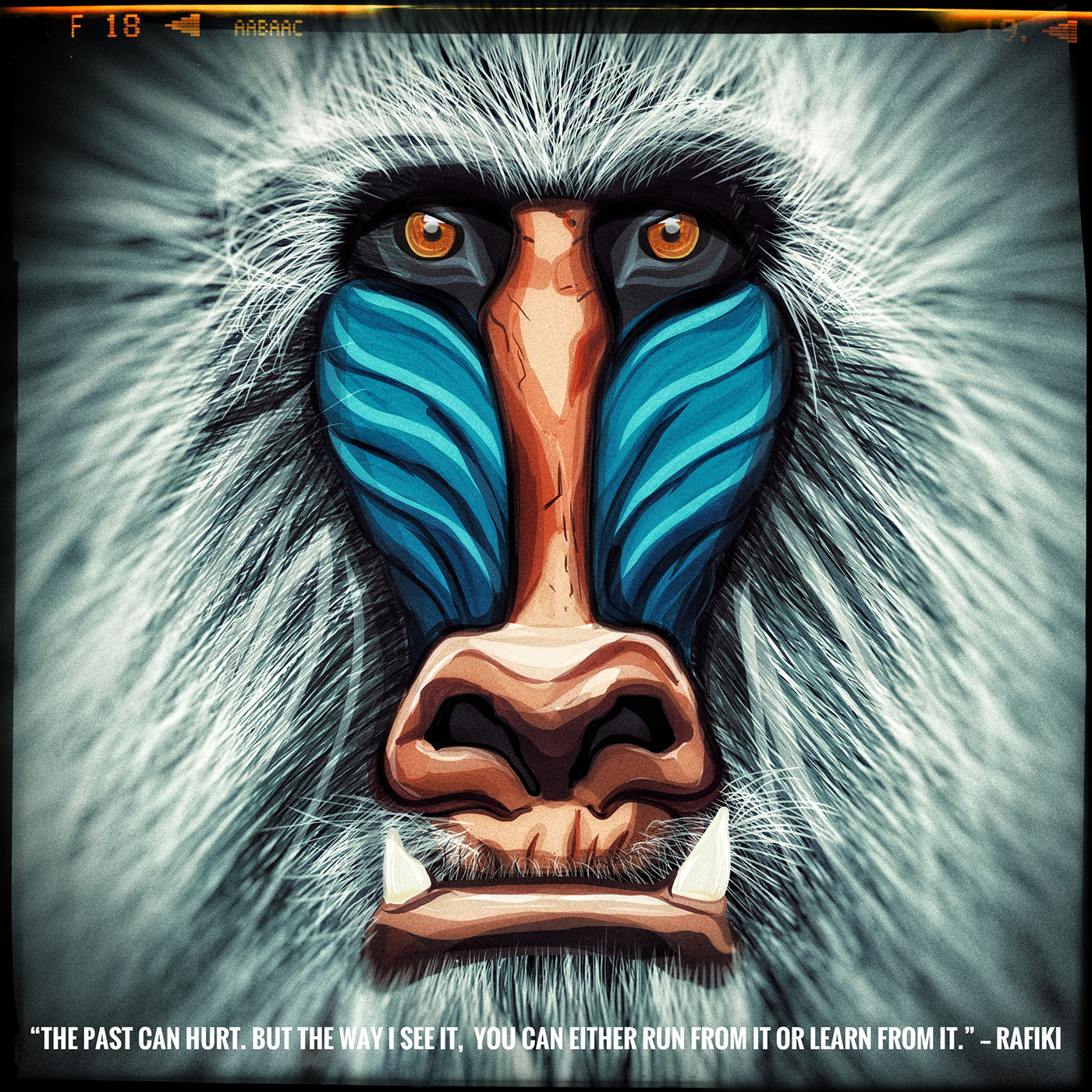Discovering Mandrill Rafiki: The Vibrant World Of Primates
Meet Mandrill Rafiki, one of the most fascinating and colorful members of the primate family. With their striking facial patterns and vibrant hues, mandrills are not just a sight to behold but also a symbol of biodiversity in their native habitats. These incredible creatures are native to the tropical rainforests of Central and West Africa, where they thrive in dense, lush environments. Known for their intelligence, social behavior, and unique physical traits, mandrills have captured the interest of researchers, wildlife enthusiasts, and conservationists alike. Mandrill Rafiki, in particular, stands out as a representative of this majestic species, embodying the beauty and complexity of nature's creations.
From their intricate social structures to their role in maintaining ecological balance, mandrills play an essential part in their ecosystems. They are often found in groups called "hordes," which can include dozens or even hundreds of individuals. These hordes are led by dominant males, whose bright colors and imposing size make them natural leaders. Mandrill Rafiki, much like its counterparts, thrives in these communal settings, showcasing behaviors that highlight the species' adaptability and resilience. Their interactions with one another and their environment reveal a world of wonder that continues to intrigue scientists and animal lovers around the globe.
Despite their vibrant presence, mandrills face numerous challenges, including habitat loss, poaching, and climate change. Conservation efforts are crucial to ensuring the survival of these magnificent creatures, and understanding their lives is the first step toward protecting them. In this article, we will delve deep into the world of Mandrill Rafiki, exploring their biology, behavior, and the efforts being made to preserve their future. Whether you're a wildlife enthusiast or simply curious about these incredible primates, this comprehensive guide will provide valuable insights into their lives and the importance of safeguarding their existence.
Read also:Who Is Willow Harper S Discover The Inspiring Journey Of A Rising Star
Table of Contents
- Biography of Mandrill Rafiki
- Why Are Mandrills So Colorful?
- The Social Life of Mandrill Rafiki
- What Do Mandrills Eat and How Do They Forage?
- Mandrill Rafiki and Its Role in the Ecosystem
- How Can We Protect Mandrill Rafiki?
- Fascinating Facts About Mandrill Rafiki
- FAQs About Mandrill Rafiki
Biography of Mandrill Rafiki
Mandrill Rafiki is not just a name but a representation of an extraordinary species that has captivated humans for centuries. To better understand this primate, let’s dive into its biography, personal details, and biological data. Below is a table summarizing key aspects of Mandrill Rafiki’s life and characteristics:
| Category | Details |
|---|---|
| Scientific Name | Mandrillus sphinx |
| Common Name | Mandrill |
| Species | Primate |
| Habitat | Tropical rainforests of Central and West Africa |
| Diet | Omnivorous (fruits, seeds, insects, small animals) |
| Average Lifespan | 20-30 years in the wild |
| Weight | 30-50 kg (males); 10-15 kg (females) |
| Distinctive Features | Vivid facial patterns, elongated snout, robust build |
Mandrill Rafiki, like all mandrills, is a member of the Old World monkey family and is closely related to baboons. Their scientific classification places them under the genus Mandrillus, which includes only one other species, the drill. Mandrills are renowned for their vibrant coloration, which is most pronounced in dominant males. These colors are not just for show—they play a crucial role in communication and social hierarchy within their groups.
Born in the dense rainforests of countries like Gabon, Cameroon, and the Republic of Congo, Mandrill Rafiki spends its days navigating the forest floor and lower canopy. Their omnivorous diet allows them to adapt to various food sources, making them versatile survivors in their natural habitat. Despite their adaptability, mandrills are listed as vulnerable due to habitat destruction and illegal hunting. Understanding their biology and behavior is critical to ensuring their survival.
Why Are Mandrills So Colorful?
One of the most striking features of Mandrill Rafiki is its vivid coloration, which sets it apart from most other primates. But why exactly are mandrills so colorful? The answer lies in a combination of evolutionary biology, social signaling, and environmental adaptation.
Evolutionary Advantages of Coloration
Mandrills have evolved their bright colors as a form of sexual selection. In the wild, dominant males with the most vibrant hues are often the most successful in attracting mates. Their red and blue facial patterns, along with their colorful rear ends, signal strength, health, and genetic fitness. This visual display serves as a non-verbal cue to females and rival males, establishing dominance and reducing the need for physical confrontations.
How Does Coloration Affect Social Hierarchy?
Within a mandrill horde, coloration plays a pivotal role in determining social rank. Dominant males, like Mandrill Rafiki, exhibit the brightest colors, which command respect and submission from other members of the group. Subordinate males and females, on the other hand, tend to have more subdued coloration. This hierarchical system ensures order within the horde and minimizes conflict, as individuals can quickly identify their place in the social structure.
Read also:Best Kdrama Vegamovies Streaming Guide Discover Hidden Gems Amp Fan Favorites
The Role of Diet in Coloration
Interestingly, the vibrant colors of mandrills are not purely genetic—they are also influenced by their diet. Foods rich in carotenoids, such as fruits and certain insects, contribute to the pigmentation of their skin. This dietary connection underscores the importance of a balanced diet for maintaining their health and appearance.
The Social Life of Mandrill Rafiki
Mandrill Rafiki is not a solitary creature; it thrives in the company of others. The social life of mandrills is a fascinating aspect of their behavior, characterized by complex interactions, hierarchies, and communal activities.
What Makes Mandrill Hordes Unique?
Mandrills are known for forming large groups called hordes, which can include anywhere from 20 to over 200 individuals. These hordes are typically led by a dominant male, whose role is to protect the group and maintain order. Within the horde, there is a clear division of labor and responsibilities. Females take care of the young, while males focus on defending the group from predators and rival hordes.
Communication Within the Horde
Mandrills communicate using a variety of methods, including vocalizations, body language, and facial expressions. Their colorful faces and rear ends are not just for show—they are used to convey emotions and intentions. For example, a relaxed mandrill might display soft, muted colors, while an agitated individual may exhibit brighter hues as a warning to others.
What Do Mandrills Eat and How Do They Forage?
Mandrill Rafiki’s diet is as diverse as its social life. As omnivores, mandrills consume a wide variety of foods, ranging from fruits and seeds to insects and small animals. This dietary flexibility allows them to adapt to changing environmental conditions and ensures their survival in the wild.
Primary Food Sources
Here are some of the main foods that make up a mandrill’s diet:
- Fruits (bananas, figs, mangoes)
- Seeds and nuts
- Insects (ants, termites, beetles)
- Small vertebrates (frogs, birds, rodents)
Foraging Techniques
Mandrills are skilled foragers, using their keen sense of smell and dexterous hands to locate food. They often dig into the soil to uncover insects or strip bark from trees to access hidden larvae. Their ability to forage efficiently is crucial for the survival of their hordes, especially during times of food scarcity.
Mandrill Rafiki and Its Role in the Ecosystem
Mandrill Rafiki plays a vital role in maintaining the balance of its ecosystem. As seed dispersers, mandrills help regenerate forests by spreading plant seeds through their droppings. This process ensures the continued growth of vegetation, which benefits countless other species.
How Do Mandrills Impact Plant Life?
By consuming fruits and seeds, mandrills inadvertently aid in the propagation of plants. Their foraging habits also contribute to soil aeration, which enhances nutrient distribution and supports plant growth.
Predator-Prey Dynamics
Mandrills are both predators and prey in their ecosystems. While they hunt small animals, they are also targeted by larger predators such as leopards. This dynamic highlights their integral role in the food chain and the delicate balance of their environment.
How Can We Protect Mandrill Rafiki?
Protecting Mandrill Rafiki and its species requires a multi-faceted approach. Conservation efforts must address habitat preservation, anti-poaching measures, and public awareness campaigns to ensure the survival of these incredible primates.
What Are the Biggest Threats to Mandrills?
The primary threats to mandrills include deforestation, illegal hunting, and climate change. Logging and agricultural expansion have led to significant habitat loss, while poaching for bushmeat remains a persistent issue.
Conservation Initiatives
Several organizations are working to protect mandrills through habitat restoration, anti-poaching patrols, and educational programs. Supporting these initiatives is crucial for safeguarding the future of Mandrill Rafiki and its kin.
Fascinating Facts About Mandrill Rafiki
Mandrill Rafiki is full of surprises! Did you know that mandrills are the largest species of monkey in the world? Or that their elongated snouts help them cool down in hot climates? These facts and more make mandrills one of the most intriguing primates on the planet.
FAQs About Mandrill Rafiki
Where Do Mandrills Live?
Mandrills are native to the tropical rainforests of Central and West Africa, including countries like Gabon, Cameroon, and the Republic of Congo.
How Long Do Mandrills Live?
In the wild, mandrills typically live for 20-30 years. In captivity, they can live slightly longer due to access to veterinary care and a controlled environment.
Are Mandrills Endangered?
Mandrills are currently listed as vulnerable by the International Union for Conservation of Nature (IUCN). Their population is declining due to habitat loss and poaching.
Conclusion
Mandrill Rafiki is a remarkable representative of its species, embodying the beauty, complexity, and resilience of nature. By learning about their lives and the challenges they face, we can take meaningful steps to protect these incredible primates and the ecosystems they inhabit. Together, we can ensure a brighter future for Mandrill Rafiki and its fellow mandrills.
External Link: For more information on mandrill conservation, visit the
Who Is Tom Keen? Discover The Intriguing Story Behind The Character
How To Master Bidfta Online Auctions: Your Ultimate Guide To Success
How Old Is Lisa Bonet? Uncovering The Age And Legacy Of A Hollywood Icon

Mandrill (Rafiki) by Pablo Prada on Dribbble

Illustration Mandrill (Rafiki) Images Behance